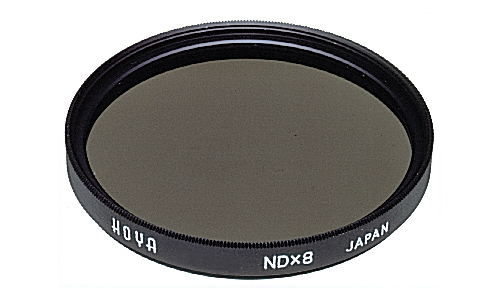Prijzen
Prijzen bij bekende aanbieders
Hieronder vind je de meest recente nieuwprijzen bij onze directe partners, zodat je zeker weet dat je altijd een gloednieuw product met de beste garantie in huis haalt.
-
1-3 dagen
- Check de website voor de levertijd|Gratis bezorgd > €20,-
€ 32,95
Gratis verzending
Productomschrijving
De HOYA NDx8 77mm is een neutraal density (ND) filter, speciaal ontwikkeld voor cameraliefhebbers die de belichting in hun foto's willen reguleren. Deze filter, met zijn grijszwarte kleur, is bedoeld om in fel licht de sluitertijd te verlengen waardoor je beweging in je foto's kunt vastleggen. Denk hierbij bijvoorbeeld aan het vloeiend weergeven van stromend water. De filtermaat van 77 mm maakt dit filter geschikt voor verschillende lensformaten, en het compacte formaat dit gemakkelijk mee te nemen is. Ondanks dat de HOYA NDx8 77mm al in augustus 2008 werd geïntroduceerd, blijft het een betrouwbaar en veelgebruikt hulpmiddel voor zowel professionals als beginnende fotografen.
Reviews
We hebben voor dit product nog geen reviews
Help anderen en geef jouw mening over dit product. We verloten iedere maand onder alle reviewers 2 x € 250,-.
Schrijf een review
Specificaties
-
camera_filter_type
-
Neutral density
-
Toelichting type
-
-
-
Partnumber
-
Y5ND8077
-
Op Kieskeurig sinds
-
February 2015
-
Kleuren
-
grijs, zwart
-
gen_category
-
Cameralensfilters
-
Modeljaar
-
2015, 2008
-
Eancode
-
0024066002846, 0799472058977, 5712505103777, 0240660028468, 0841606026007, 4054318559985
-
Kleur(en)
-
zwart, grijs
Toelichting specificaties
In conditions of extreme light intensity, such as sunshine on snowy mountains or on the beach, or when using a camcorder, ND (Neutral Density) filters are recommended as essential.\n\nNeutral Density filters are often ignored by photographers, but they have several uses and offer the possibility to achieve otherwise unachievable results. ND filters appear grey and reduce the amount of light reaching the film, they have no affect on color balance.\n\nThey have four main uses:\n\n1) To enable slow shutter speeds to be used, especially with fast films, to record movement in subjects such as waterfalls, clouds, cars, seas etc.\n\n2) To decrease depth of field by allowing wider apertures to be used, which helps separate subjects from their background.\n\n3) To decrease the effective ISO of high speed film (ie: above ISO400) and allow it to be used outdoors in blight situations.\n\n4) To allow cine and video cameras (which have fixed shutter speeds) to film subjects such as snow, sand or other bright scenes which would normally cause over-exposure.



